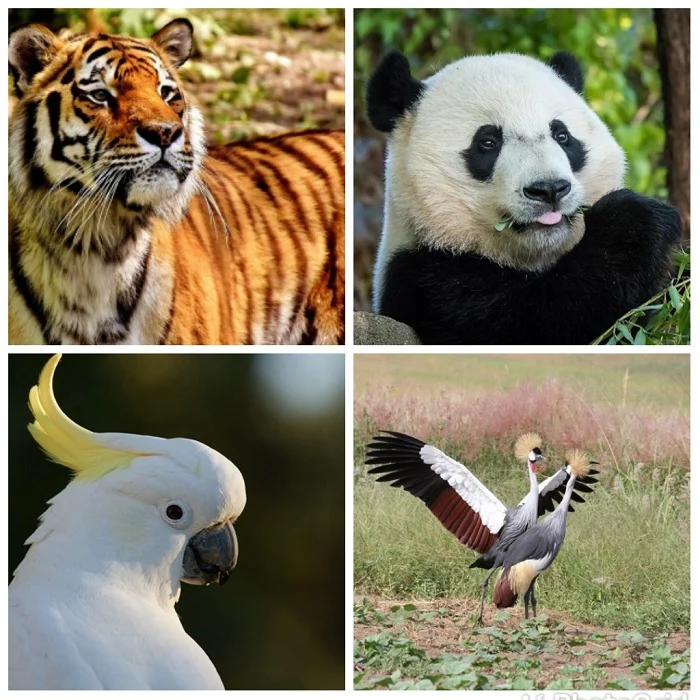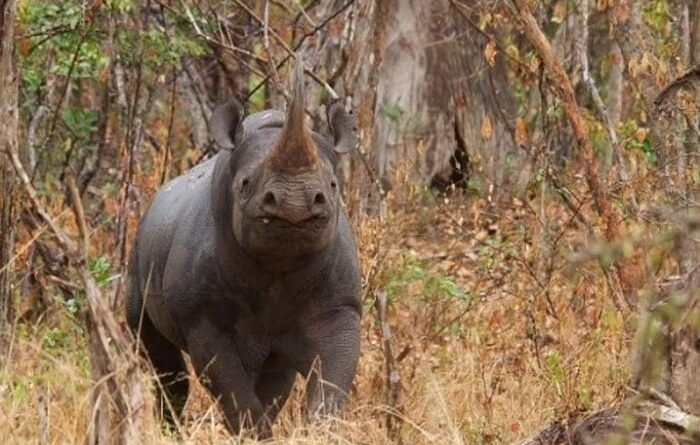Threatened wildlife: The impact of human activity and climate change
Around 15,000 species of animals and plants are on the brink of extinction due to human activities and climate change.
Many species are facing extinction primarily due to human actions. Among these are animals that are particularly vulnerable, including those still found in Rwanda, such as the mountain gorillas, which are already few in number.
Some of these endangered species have populations of less than 1,000 individuals, while others number less than 250, as reported by Magazine Racines.
A report from the International Union for Conservation of Nature (IUCN) highlights several endangered species, including the giant panda, with fewer than 400 tamarins remaining, the Javan rhinoceros (also known as the Javan unicorn), Asian elephants, and the Antillean leptodactyls with fewer than 200 individuals left.
The report also indicates that bees are struggling due to crops treated with pesticides, which adversely affect their health as they rely on plants for food.
Poaching, illegal fishing, wildlife trade, deforestation, and habitat destruction continue to threaten many species. For example, the impact of past hunting practices has severely affected mountain hares, making their presence in Rwanda a rarity, often only seen in state-controlled areas like national parks due to habitat loss.
Vulnerable Species List Looking at the red list of endangered species, it shows that some reptiles, such as certain snake species, are also facing extinction in various regions due to human activities.
Human actions have been implicated in the decline of approximately 22,400 species, as reported by the IUCN. Despite the biblical claim that God created the Earth for human stewardship, it seems humanity also plays a role in driving these species to extinction, as the rate of species loss exceeds that of new births.
Examples of this crisis include poaching, illegal fishing, trade of forest products, deforestation driving wildlife away, and the use of toxic chemicals.
In Madagascar, the Hapalémur species faces extinction, with their numbers dwindling due to habitat destruction, mining for precious minerals, and agricultural expansion driven by population growth.
Urbanization has brought people closer to wildlife and plants, leading to air pollution, disease outbreaks that can decimate animal populations, and significant climate change impacts.
Apart from actively hunting these species, people also push them out of their designated areas like parks to exploit these lands for agriculture or settlement.
The IUCN estimates that by 2050, human activities threatening wildlife and plants could increase by 120 times unless urgent actions are taken—something unprecedented in Earth’s history.
The 2020 list of critically endangered species included Bengal tigers, now numbering fewer than 4,500. Their decline is attributed to hunting for their skin and body parts, which are used for medicine and ornaments. This trend also negatively affects other tiger species, including the Javan and white tigers.
There are currently about 110,000 gorillas worldwide, with 700 mountain gorillas remaining. Despite Rwanda’s commitment to protecting these animals, other countries see a decline in their numbers due to insecurity from poaching, deforestation, and illegal mining activities for minerals like coltan, used in mobile phones.
The Javan rhinoceros, with fewer than 58 remaining, can only be found in Ujung Kulon National Park in Indonesia, where they are hunted for traditional medicine in China.
Asian elephants are classified as endangered due to the destruction of 75% of their forest habitats.
Reports indicate that around 50,000 elephants have been removed from their natural habitats to be bred in captivity.
Giant pandas found in China and the Tibetan plateau number approximately 1,750. Their decline is attributed to habitat destruction and overuse of bamboo, their primary food source.
In Wanglang, known as a panda paradise, 176 pandas have disappeared in the last 21 years, with only 20 remaining on a stretch of land covering 32,000 hectares.
The Hapalémur species in southeastern Madagascar is also on the verge of extinction, with fewer than 160 individuals left, driven by habitat loss, mining, and agricultural activities due to human population growth.
Yellow-crested cockatoos are also listed as endangered, with only 1,000 remaining in regions like Hong Kong, Indonesia, and Timor, primarily due to poaching for the pet trade, severely limiting their ability to breed.
In Africa, there is a decline in scavenger birds, which usually feed on dead animals. Human activities have reduced their populations, along with livestock farming practices leading to contamination that further impacts these birds.
In 2020, about 1,000 vultures were reported dead over two weeks in Guinea-Bissau’s two cities, Bafatá and Gabú.
Efforts to eliminate poisoned vultures are linked to poaching activities, with José Tavares, the director of a vulture conservation organization, highlighting the secrecy surrounding these poaching operations, as elephants are often killed for their tusks, while vultures are targeted for consuming carcasses left behind.
In Rwanda, activities that threaten wildlife have also been observed. For example, vultures that were previously reliant on human settlements have been removed from their environments, leading to a reported 748 vultures remaining in the country in 2019.


